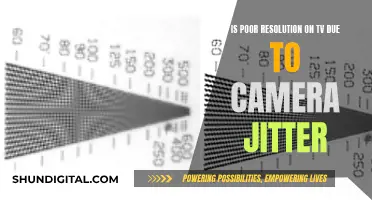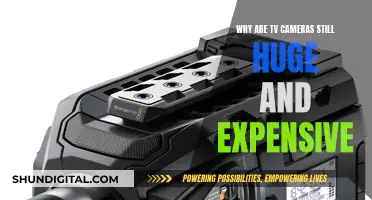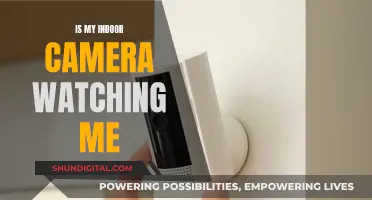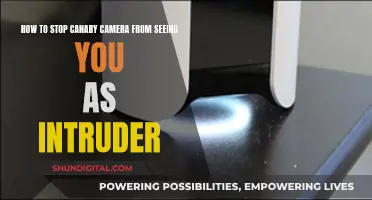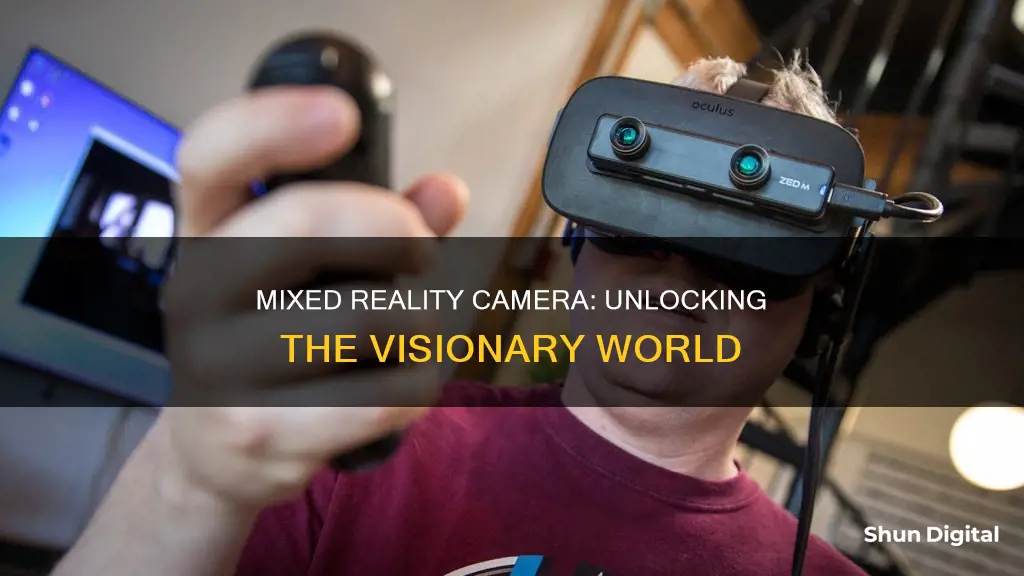
Mixed reality (MR) is an emergent technology that blends virtual reality (VR) and augmented reality (AR). MR headsets like the Microsoft HoloLens use cameras to constantly map the wearer's environment, allowing for interactive experiences where digital objects and the physical world coexist. This technology has applications in gaming, entertainment, healthcare, architecture, and education, with potential for further integration into everyday life. While MR offers exciting possibilities, privacy concerns have emerged, particularly regarding camera access, which is currently restricted by most VR/MR headset manufacturers.
| Characteristics | Values |
|---|---|
| Purpose | Liberate users from screen-bound experiences |
| Interaction | Instinctual interactions with data in living spaces and with friends |
| Devices | Headsets, handheld devices, glasses, smartphones |
| Hardware | Cameras, sensors, processors, displays, input systems, cloud computing |
| Functionality | Spatial mapping, anchors, hand-tracking, eye-tracking, speech input, positioning, 3D asset collaboration |
| Content | Holographic representations, 3D models, digital objects, graphics, video streams, holograms |
| Experience | Immersive, interactive, augmented, virtual, mixed |
| Use Cases | Gaming, education, healthcare, retail, entertainment, sports, socialisation |
| Privacy | Access to camera images/feed is restricted by vendors to prevent privacy violations |
What You'll Learn

Mixed reality blends the physical and digital worlds
Mixed reality (MR) is an emergent technology that blends virtual reality (VR) and augmented reality (AR). It liberates us from screen-bound experiences by offering instinctual interactions with data in our living spaces and with our friends.
MR blends the physical and digital worlds, unlocking natural and intuitive 3D human, computer, and environmental interactions. This new reality is based on advancements in computer vision, graphical processing, display technologies, input systems, and cloud computing.
The term "mixed reality" was introduced in a 1994 paper by researchers Paul Milgram and Fumio Kishino, who described it as a continuum between totally real and totally virtual environments. Today, mixed reality is often described as an environment in which real and virtual subjects and objects interact in real-time, and users can interact with both real and virtual components.
Mixed reality headsets, such as the Microsoft HoloLens, play a crucial role in delivering these experiences. These headsets include cameras that constantly map the wearer's environment, allowing for interactions between the physical and digital worlds. For example, in a game designed for mixed reality, characters can walk around and interact with objects in the user's physical space.
The applications of mixed reality extend beyond gaming. Artists, designers, and advertisers can use mixed reality to bring 3D work into the real world. In healthcare, mixed reality can be used for training and education, allowing medical students to practice in a simulated operating room setting. It can also enhance surgical procedures by providing surgeons with access to patient documents and inner anatomy without physical interaction.
Mixed reality is also being explored in retail to create more engaging shopping experiences. For instance, 3D modelling is becoming increasingly popular, giving shoppers a clearer understanding of products. Additionally, companies like VNTANA use algorithms to optimise brands' 3D designs of merchandise, scaling them for use across various platforms, from Facebook to the metaverse.
In conclusion, mixed reality blends the physical and digital worlds, creating immersive experiences that seamlessly combine virtual and real-world elements. With advancements in technology and increasing accessibility, mixed reality has the potential to revolutionise various industries and become an integral part of our daily lives.
Understanding A-DEP, M, AV, TV, P Camera Modes
You may want to see also

Mixed reality headsets include cameras that map the wearer's environment
Mixed reality is an emergent technology that blends virtual reality (VR) and augmented reality (AR). Mixed reality headsets such as the Microsoft HoloLens are paving the way for new possibilities in the gaming world and beyond. These head-mounted displays include cameras that constantly map the wearer's environment. This means that when you play games on these devices, characters can walk around your physical space and interact with objects in the room. For example, a character could sit on your couch or walk around your coffee table.
The cameras on mixed reality headsets allow for the blending of the physical and digital worlds, creating natural and intuitive 3D human, computer, and environmental interactions. This technology is based on advancements in computer vision, graphical processing, display technologies, input systems, and cloud computing. The term "mixed reality" was first introduced in a 1994 paper by researchers Paul Milgram and Fumio Kishino, who described it as a continuum between totally real and totally virtual environments.
In addition to gaming, mixed reality has a wide range of applications in various fields. Artists, designers, and advertisers can use mixed reality to bring 3D work into the real world in new and engaging ways. In healthcare, mixed reality can be used to train medical students, provide surgeons with real-time patient information during procedures, and even allow for "X-ray vision" to visualise a patient's anatomy without physical contact. Mixed reality is also being used in retail to create more engaging shopping experiences and in sports to combine physical and virtual worlds for competitive events.
While mixed reality offers exciting possibilities, there are valid concerns about privacy and data security. To address these concerns, companies like Meta have restricted developers' access to camera data in mixed reality applications to prevent potential privacy violations. However, this restriction has limited the ability to create certain types of mixed reality experiences. As technology advances and privacy safeguards evolve, we can expect to see further developments in this area, with the potential for mixed reality to become an even more integral part of our lives.
TCL TV: Are Cameras Watching You?
You may want to see also

Mixed reality experiences are the result of technological advancements
Mixed reality (MR) is an emergent technology that blends virtual reality (VR) and augmented reality (AR). MR experiences are the result of advancements in computer vision, graphical processing, display technologies, input systems, and cloud computing. Here are some key aspects that contribute to the advancement of MR:
Environmental Understanding:
MR headsets, such as the Microsoft HoloLens, use cameras to constantly map and understand the user's physical environment. This includes spatial mapping, scene understanding, and detecting objects, surfaces, and boundaries. This environmental perception allows virtual content to be accurately placed and interacted with in the real world.
Human Understanding:
MR technology incorporates advanced input methods such as hand-tracking, eye-tracking, and speech input. This enables natural and intuitive interactions with digital content. For example, users can manipulate virtual objects with their hands or navigate using voice commands.
Display Technologies:
Improvements in display technologies have enhanced the visual experience of MR. Headsets with see-through displays allow users to see the physical world while digital content is overlaid, creating a seamless blend of the real and virtual.
Graphical Processing and Computer Processing:
Advancements in graphical processing and computer processing power enable high-fidelity holographic representations and 3D models. This results in more realistic and immersive MR experiences, where digital objects and environments are rendered with increased detail and interactivity.
Collaboration and Interaction:
MR also enables collaboration and interaction in virtual spaces. Multiple users can asynchronously collaborate and interact with digital content in the same physical space, even if they are in different locations or time zones. This opens up opportunities for remote teamwork and shared experiences.
MR experiences are made possible by technological advancements that bridge the physical and digital worlds. These advancements allow users to interact with and manipulate virtual content in real-time, creating immersive and engaging experiences for various applications, including gaming, healthcare, education, and retail.
The Benefits of City-Wide Camera Surveillance
You may want to see also

Mixed reality requires the use of a headset
Mixed reality is a blend of the physical and digital worlds, creating an immersive experience that combines elements of augmented reality (AR) and virtual reality (VR). It allows users to interact with both virtual and physical environments simultaneously, enabling a range of applications beyond gaming, such as in healthcare, architecture, and education.
To access mixed reality, a headset is required. The headset may be similar to those used for VR, but with some key differences. Mixed reality headsets often include cameras that constantly map the wearer's physical environment. This environmental understanding is a crucial aspect of mixed reality, allowing virtual objects and characters to interact with the real world. For example, a virtual block can appear on a physical table, and the user can then push or knock it off with their hand, viewed through the headset.
The Microsoft HoloLens is an example of a mixed reality headset, offering users the ability to see and interact with both real and virtual elements. The Windows Mixed Reality headset, on the other hand, is a VR headset with a camera, enabling a degree of mixed reality functionality.
The use of a headset in mixed reality is essential to providing the user with a combined view of the physical and virtual worlds. The headset serves as a display, overlaying digital objects and effects onto the user's physical surroundings. This requires either a transparent lens or a camera within the headset, ensuring that the user can still see their real-world environment.
While some mixed reality experiences may be accessible through handheld devices and smartphones, the headset remains a central component of the technology, offering an immersive and interactive experience.
Is Your TV Watching You?
You may want to see also

Mixed reality applications can be used in healthcare
Mixed reality (MR) is an emergent technology that blends virtual reality (VR) and augmented reality (AR). MR headsets, such as the Microsoft HoloLens, are used in the gaming world, but they also have applications in healthcare.
MR technology can be used to provide vital information to operating surgeons via a hands-free interface, keeping procedures simple and safe for patients. Here are some ways in which mixed reality applications can be used in healthcare:
- Real-time diagnostics: MR can be used to provide medical practitioners with a multi-dimensional view of medical scans, giving them a thorough understanding of the patient's medical condition in real time. This can be achieved by using MR glasses to overlay digital images on a patient's body.
- Improved medical training: MR can enhance medical training by providing medical students with interactive and realistic training systems. For example, MR techniques can generate personalised 3D models of a patient's anatomy, allowing students to explore complex anatomical structures in a fully immersive environment.
- Image-guided surgery: MR devices can provide surgeons with real-time information on a patient's physical state during surgery, improving accuracy and enabling more informed decision-making. This can lead to a higher success rate in performing complex surgeries.
- Improving patient experience: MR can help establish a stronger doctor-patient relationship by improving communication and enabling doctors to explain medical conditions and procedures in greater detail. This can lead to better patient understanding, trust, and satisfaction.
- Empowering healthcare professionals: MR can speed up the diagnostic process, streamline care time, enable personalised patient experiences, and improve outcomes. Additionally, MR can be used to assist in pain management, mental health treatment, and other healthcare areas.
- Remote collaboration: With MR, healthcare professionals can connect and collaborate with remote experts, access patient data, and consult MRI images in 3D remotely. This enables efficient problem-solving and facilitates global collaboration among physicians.
The applications of MR in healthcare are vast, and it is expected to revolutionise the industry, particularly in medical training and virtual reality simulation.
Exploring the Markforged 3D Printer's Camera Functionality
You may want to see also
Frequently asked questions
Mixed reality (MR) is a blend of virtual reality (VR) and augmented reality (AR). It combines elements of AR and VR with a user's physical surroundings to create an immersive experience.
Mixed reality can be accessed through a range of devices, including headsets such as the Microsoft HoloLens, HTC Vive, or Magic Leap, as well as handheld devices like smartphones and tablets.
Mixed reality headsets include cameras that constantly map the wearer's environment. This allows for interactions between real and virtual subjects and objects in real-time.
Mixed reality has a wide range of applications, including gaming, entertainment, healthcare, education, retail, and sports. It can be used for training, simulations, and providing immersive experiences that combine the physical and virtual worlds.
One limitation of mixed reality is the privacy concerns associated with camera access. To protect user privacy, developers may be restricted from accessing camera data, which limits the potential of MR applications.


